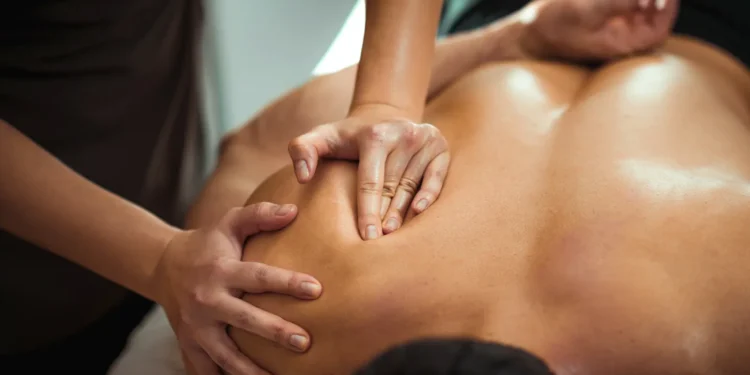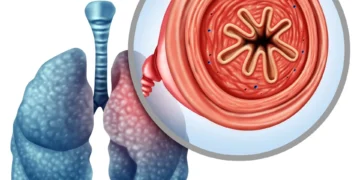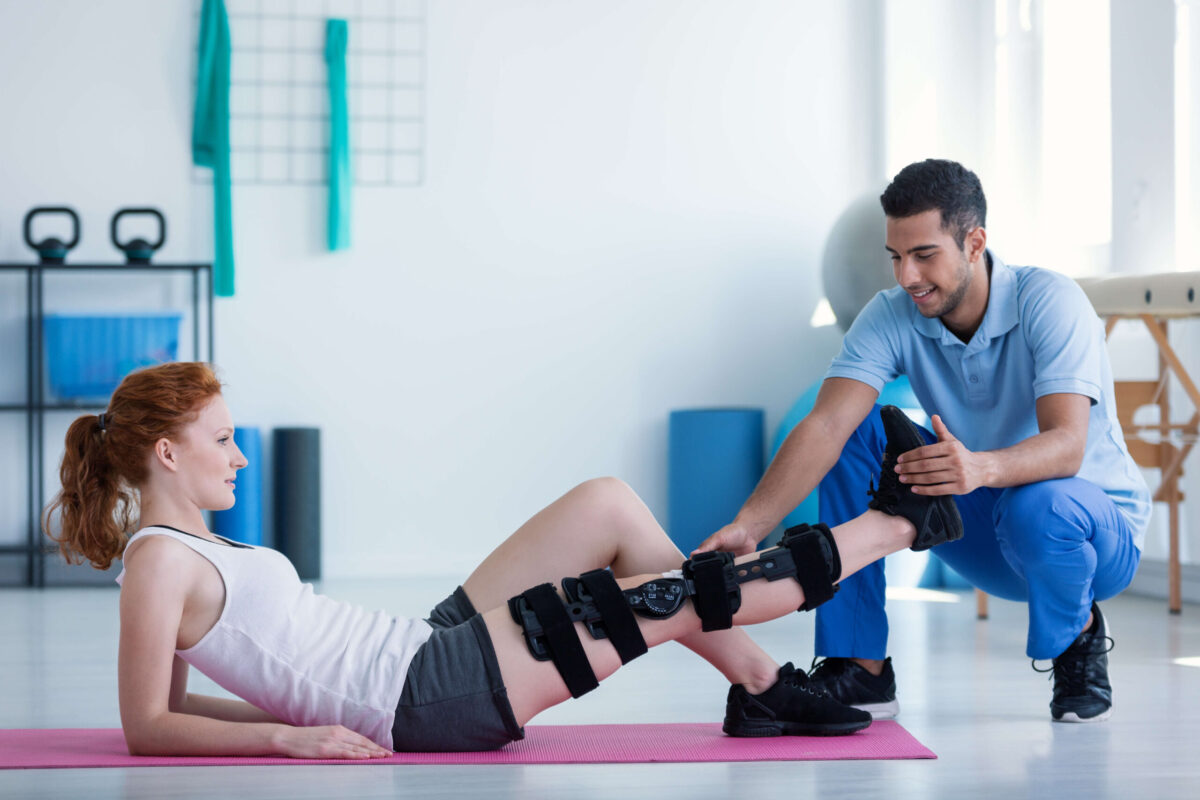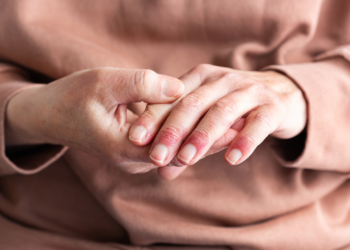Introduction: The Ancient Practice Meets Modern Medicine
Emily, a third-year university student in Ottawa, juggled classes, part-time work, and volunteer commitments. When chronic back pain and anxiety began to disrupt her studies and sleep, her doctor recommended something unexpected—massage therapy, combined with physiotherapy in Ottawa. Skeptical but hopeful, she visited a certified therapist at Physiocare Physiotherapy & Rehab Centre, and within weeks, she noticed real changes. Her pain diminished, her stress lifted, and her concentration improved.
What seemed like a luxury quickly revealed itself to be a clinically backed solution. Massage therapy, once ancient tradition, is now validated by modern science—and reshaping health care in surprising ways.
Table of Contents
Understanding Massage Therapy: More Than Just Relaxation
Massage therapy involves manipulating soft tissues—muscles, tendons, ligaments, and fascia—to improve physical and emotional well-being. While many equate massage with spa treatments, clinical massage goes far beyond luxury.
Defining Therapeutic Massage in Clinical Terms
- Uses specific techniques backed by anatomy and physiology
- Targets musculoskeletal pain, inflammation, and restricted motion
- Often part of a broader treatment plan alongside physiotherapy
The Biological Mechanisms Behind Touch Therapy
- Stimulates parasympathetic nervous system (rest and digest)
- Reduces cortisol (stress hormone) levels
- Increases serotonin and dopamine (mood-enhancing neurotransmitters)
The Scientific Foundation: Decades of Research Unveiled
Modern research offers compelling evidence supporting massage therapy’s effectiveness across various health conditions.
Peer-Reviewed Studies That Changed Everything
A study published in the Annals of Internal Medicine (2011) found that weekly massage therapy significantly reduced chronic back pain, outperforming standard care.
Another key paper in The Journal of Clinical Psychiatry (2010) demonstrated reduced symptoms in individuals with generalized anxiety disorder after regular massage sessions.
Understanding Control Groups and Placebo Effects
Massage studies often compare results with:
- Sham treatments (placebo massage)
- No-treatment control groups
- Alternative therapies (like physical therapy)
This rigorous methodology strengthens the validity of findings.
Meta-Analyses: What Large-Scale Reviews Tell Us
A 2018 meta-analysis in Pain Medicine concluded that massage therapy significantly reduced pain intensity, especially in conditions like fibromyalgia and osteoarthritis.
Pain Management: Where the Evidence Shines Brightest
Chronic Back Pain Relief Through Structured Touch
- Reduces muscle tension and improves circulation
- Enhances range of motion and physical function
Arthritis and Joint Pain: Mechanical Benefits Explained
- Lubricates joints by stimulating synovial fluid
- Reduces swelling through lymphatic drainage
Migraine and Tension Headache Reduction
- Lowers frequency and intensity of episodes
- Relaxes trigger points in neck and scalp
Post-Surgical Pain: Accelerating Recovery Through Massage
- Improves tissue healing
- Minimizes reliance on pain medications
Mental Health Benefits: The Mind-Body Connection
Stress Hormone Reduction: Cortisol and Beyond
- 30-minute sessions shown to reduce cortisol by up to 31%
- Simultaneously increase serotonin by 28% (Touch Research Institute, 2005)
Anxiety Disorders: Clinical Evidence for Therapeutic Touch
- Decreases heart rate and blood pressure
- Creates a sense of safety through human connection
Depression Management Through Regular Massage Sessions
- Weekly treatments linked to mood stabilization
- Improves adherence to other mental health therapies
Sleep Quality Improvements: The Neurological Pathways
- Activates the vagus nerve
- Encourages melatonin production for better sleep
Cardiovascular Health: Surprising Heart Benefits
Blood Pressure Reduction in Hypertensive Patients
- Consistent sessions lower systolic and diastolic pressure
- Complementary to medication and lifestyle changes
Improved Circulation: More Than Surface Deep
- Enhances oxygen delivery to muscles
- Supports cellular regeneration
Heart Rate Variability and Autonomic Nervous System Balance
- Increases HRV—a sign of improved stress resilience
- Promotes emotional and physical recovery
Athletic Performance and Recovery: Elite Sports Medicine Insights
Muscle Recovery Acceleration in Professional Athletes
- Reduces soreness (DOMS) by up to 30%
- Increases mitochondrial biogenesis
Injury Prevention Through Preventive Massage Protocols
- Identifies tightness or asymmetry before injury occurs
- Supports optimal biomechanics
Range of Motion Enhancement: Flexibility Science
- Breaks down adhesions in muscle fibers
- Facilitates smoother joint movement
Lactate Clearance and Metabolic Recovery
- Speeds up post-exercise recovery time
- Allows more frequent training without burnout
Immune System Enhancement: The Unexpected Discovery
White Blood Cell Activity and Massage Frequency
- Increased natural killer cell activity observed after five sessions
- Boosts defense against infections
Inflammatory Marker Reduction in Regular Recipients
- Lowers cytokine levels (e.g., IL-6, TNF-alpha)
- Supports management of chronic inflammation
Autoimmune Conditions: Emerging Research Findings
- Early studies suggest relief from symptoms of lupus, MS, and rheumatoid arthritis
- More research underway, but results are promising
Cancer Care Support: Complementary Treatment Evidence
Quality of Life Improvements During Treatment
- Eases anxiety, pain, and fatigue
- Offers emotional support
Nausea and Fatigue Reduction in Chemotherapy Patients
- Massage shown to reduce nausea intensity by 42% (source: Journal of Pain and Symptom Management, 2016)
Lymphatic Drainage Benefits for Cancer Survivors
- Helps manage lymphedema
- Improves immune response post-treatment
Pregnancy and Maternal Health: Safe Practice Guidelines
Labor Pain Management Through Prenatal Massage
- Encourages natural oxytocin release
- Reduces epidural use rates
Postpartum Depression and Anxiety Relief
- Supports hormonal rebalancing
- Enhances mother-infant bonding
Safe Techniques for Each Trimester
- Avoids pressure points and high-risk zones
- Tailored protocols ensure maternal and fetal safety
Pediatric Applications: Children’s Health Benefits
ADHD and Behavioral Improvements in School-Age Children
- Improves concentration and emotional regulation
- Touch therapy as adjunct to behavioral interventions
Premature Infant Development Through Gentle Touch
- Stimulates weight gain and neural development
- Reduces hospital stay duration
Autism Spectrum Disorders: Sensory Integration Support
- Calms sensory overload
- Improves body awareness
Different Massage Modalities: What Works Best
Swedish Massage: The Gold Standard for Research
- Gentle and rhythmic; ideal for general well-being
Deep Tissue Therapy: When Intensity Matters
- Targets chronic tension in deeper layers
Trigger Point Release: Targeting Specific Pain Patterns
- Releases “knots” causing referred pain
Myofascial Release: Connective Tissue Science
- Loosens fascia to improve mobility
Frequency and Duration: Optimizing Treatment Schedules
- Weekly Sessions yield best outcomes for chronic issues
- Bi-Weekly ideal for maintenance or mild symptoms
- 30 to 60-minute durations most researched and effective
- Sustained practice over months leads to long-term benefits
Safety Considerations: When Massage Isn’t Recommended
Medical Contraindications and Risk Factors
- Blood clot disorders, open wounds, infections
Proper Practitioner Training and Certification Importance
- Always choose Registered Massage Therapists (RMTs)
Red Flags: Recognizing Adverse Reactions
- Persistent bruising or dizziness warrants consultation
Cost-Effectiveness Analysis: Healthcare Economics of Massage
Insurance Coverage Trends and Policy Changes
- Most extended health plans in Canada now cover massage therapy
Comparing Costs to Traditional Medical Interventions
- Reduces doctor visits and medication dependency
Workplace Wellness Programs: Return on Investment Data
- Increased productivity and lower absenteeism
The Future of Massage Research: Emerging Studies and Technologies
- Neuroimaging shows real-time brain changes during massage
- Genetic profiling may predict treatment response
- Wearable tech to track biometric improvements post-session
Making Informed Decisions: Choosing Quality Care
Finding Evidence-Based Practitioners
- Look for providers with clinical experience and research-backed methods
Questions to Ask Your Healthcare Provider
- “Is massage safe with my current treatment plan?”
- “What frequency would work best for my condition?”
Integrating Massage with Conventional Medical Treatment
- Works best as part of a comprehensive care strategy
Conclusion: The Evidence Speaks for Itself
Massage therapy, especially when delivered by certified professionals, is more than a feel-good experience—it’s a scientifically validated approach to holistic health. For those in Ottawa, exploring massage therapy in Ottawa could mean not just managing symptoms, but unlocking better quality of life. Whether you’re like Emily, navigating stress and back pain, or an athlete or parent, the healing power of therapeutic touch is both ancient and incredibly modern.
With institutions like Physiocare Physiotherapy & Rehab Centre leading the charge, evidence-based massage is now an accessible, effective, and respected component of 21st-century healthcare.


 Home
Home










